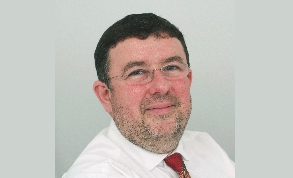Staff plan needed for elective recovery
NHS Providers was responding to a letter from NHS England and NHS Improvement that set out actions to enable systems to make maximum use of the additional resources earmarked for elective recovery.
More than six million people are on waiting lists in England. But the letter, signed by elective recovery director Jim Mackey, acting chief people officer Em Wilkinson-Brice, and senior clinicians, said the number of long-waiting patients was beginning to fall. Expanding workforce capacity while guarding against staff burnout is essential in addressing the backlog due to Covid-19, they added.
Initially, the national bodies are working with providers to scope workforce opportunities and solutions in four areas – theatres, anaesthetics, and critical care; diagnostics; pathway transformation; and community care. Funding was available in 2022/23 – for example, to increase the number of anaesthetic associates and training places for anaesthetists and critical care staff.
The letter lists a series of high-impact enablers, which some systems are implementing, but it urged providers to revisit or consider the actions if they had not already done so.
NHS Providers chief executive Chris Hopson (pictured) said it was important to continue to examine ideas to accelerate recovery.
‘Trust leaders are absolutely committed to bearing down on waiting times as quickly as possible, while ensuring the health and wellbeing of their staff is protected,’ he said.
‘But we cannot disguise the fact that the NHS simply doesn’t have enough staff. Our teams are working incredibly hard to cut waiting times, but pressures on our overstretched staff, and persistent major workforce shortages, are the significant limiting factor preventing trusts from going even faster.
‘We have 110,000 vacancies in trusts alone, high levels of burnout and worrying numbers of staff resigning from the service. Asking existing staff to do more isn’t enough. We need a long-term, fully funded workforce plan for the NHS.’
Listing the high-impact enablers, the letter insisted it was important that staff can take annual leave, take breaks and can receive health and wellbeing support when needed. However, they should also be able to volunteer to work additional paid hours. Systems should remove caps on consultant job plans so doctors who wish to do so can work more than 10 programmed activities (PAs) – 12 where consultants have exercised relevant opt-outs.
Senior doctors could also choose to support education, training and other leadership roles, which were adversely impacted during the pandemic, by undertaking supporting professional activities (SPAs). The letter suggests this could protect against burnout and SPAs could be added without affecting other activities.
All staff could be given opportunities to increase their contracted hours, including through bank shifts to reduce trusts’ reliance on agency and locum staff. Systems should also maximise the use of collaborative staff banks, again reducing the use on agency staff.
Downward pressure on waiting lists could be maintained through effective rostering during peak periods such as bank and summer holidays, while NHS reservists could be used to help cover surges in activity. Innovative staffing models could give opportunities for students, trainees and support workers, if adequately supported and safe.
Recently retired staff could be asked to return to support education and training, and to cover outpatients, potentially on longer-term contracts. And those considering retirement could be encouraged into similar roles. Consideration could be given to pensions, with those returning after retirement age assured their pension will not be reduced – a measure that also applies to those who return before retirement age if they re-join the NHS before the end of October.
Systems should continue to focus on accelerating the recruitment of substantive nurses and midwives, administrative staff, healthcare support workers and medical support workers.
National actions are being taken forward, such as work on pensions, training including maximising opportunities in the independent sector, and workforce redesign and innovation. However, the letter acknowledged there are challenges to tackling elective waiting times, including the high level of Covid infections, and demand for urgent and emergency care, mental health, primary and community care.
British Medical Association consultants committee chair Vishal Sharma said doctors would do all they can to ensure patients get the care they need. But he added: ‘The fact is that there simply aren’t enough doctors. What’s worse is that the doctors we have are exhausted, burned out and demoralised. They gave their all during the pandemic and are now facing the secondary challenge of tackling the enormous waiting lists.’
He added that the letter made some helpful suggestions, including support for returning retired doctors, but it did not mitigate ‘the punitive pension taxation that we know is driving experienced and much-needed doctors away in their droves’. He alleged pension information provided by NHS England and NHS Improvement was ‘misleading and inaccurate’, and the BMA had asked it be corrected.
Related content
This event is for those that will benefit from an overview of costing in the NHS or those new to costing and will cover why we cost and the processes.
Mindset and the neuroscience of leadership - Lunch and Learn